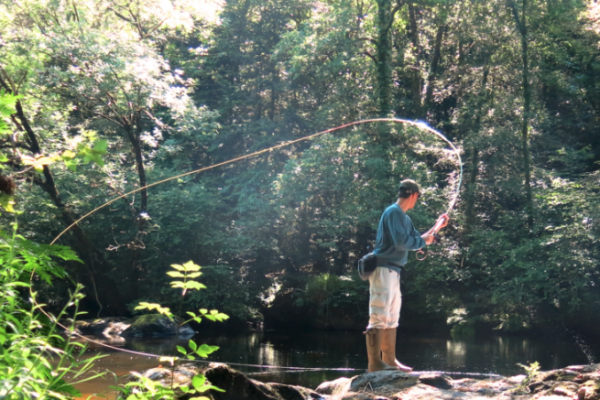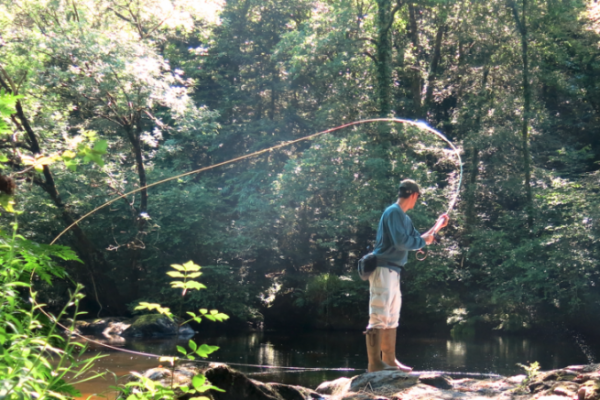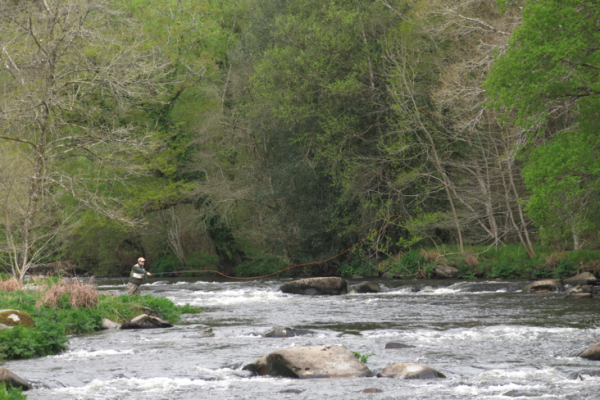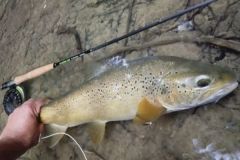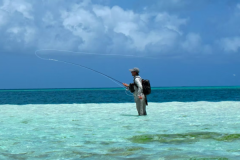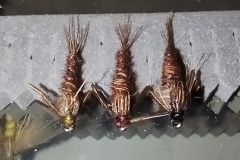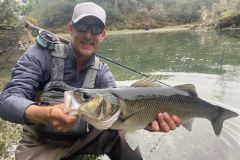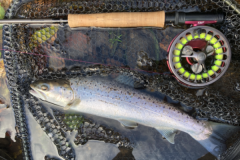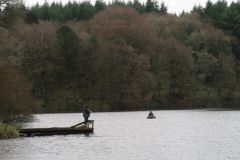Since its appearance in Scotland, the Spey Cast has undergone many influences, notably the Scandinavian "underhand" casting (Goran Andersson) and the North American use of skagit lines, widely employed for steelhead fishing, which have led to the evolution of equipment and techniques.
In France, this technique is commonly used to search for salmon, notably on the Gaves, but also by some anglers on the rivers of Brittany and Normandy, and increasingly for other migratory species such as shad and sea trout. It offers many advantages and opens up new horizons that many anglers could take advantage of in their search for other species such as trout and grayling (Trout Spey or one-handed rod, by the way), but also whitefish and asp, for example!
The fundamentals
The traditional overhead cast, widely used by the vast majority of anglers worldwide, is certainly effective when rivers are wide and clear, but quickly finds its limits in other contexts. It also has a number of disadvantages, not least of which are that it requires more effort, needs to be pulled back to unwind the line and load the rod, and has the unfortunate tendency to generate many more knots on the leader. Not to mention its limitations in windy conditions.
The Spey Cast, on the other hand, offers the essential advantage of being able to cast in any situation and on any river in the world, even on windy days. Unlike overhead casting, the principle is to create a loop or "D loop" as large as possible, which is anchored to the water to load the rod and cast. This technique makes it possible to reach great distances and is particularly useful on wide rivers, where it is necessary to cast over 20 metres, up to 40 metres and more. However, it is now possible to fish with Spey cast on smaller rivers with the advent of short Spey or Switch rods, as well as with one-handed rods.

A technique for a multitude of species
Spey cast is mainly used for migratory fish: Atlantic salmon, Pacific salmon, steelhead, sea trout and for some anglers also shad, but this technique can also be used for all types of species, when you want to cast in crowded places, on positions with little recoil or from the shore when wadding is forbidden and reach distant positions.
I still remember a fishing trip on the Rena in Norway where the graylings were gobbling in the middle of the river and overhead casting was not possible because of the riverbank vegetation. Only a 10-foot 4/5 line or a small switch could be used to cast over the frenzied gobbling of feasting grayling. Thanks to spey casting, my friend Olivier and I were able to reach these fish and catch several of them.
This technique can also be used to fish for trout and grayling in certain large rivers, such as the Dordogne and Rhône, where the practice seems to be developing over the years.
In Brittany, I use it regularly for migratory fishing, of course, but very often also for trout. It allows me to change direction quickly, but above all to cast under dense vegetation and place my flies in seldom-coveted spots.
In destinations where the wind is frequent, spey casts allow you to cast without risk of injury or damage to your equipment by placing your anchor on the opposite side to the wind. In Argentina, for example, spey casts allow you to fish the resident and migratory fario trout rivers of Patagonia, or the sea trout rivers of Tierra del Fuego, where winds of 50 to 120 km/h blow almost throughout the season.
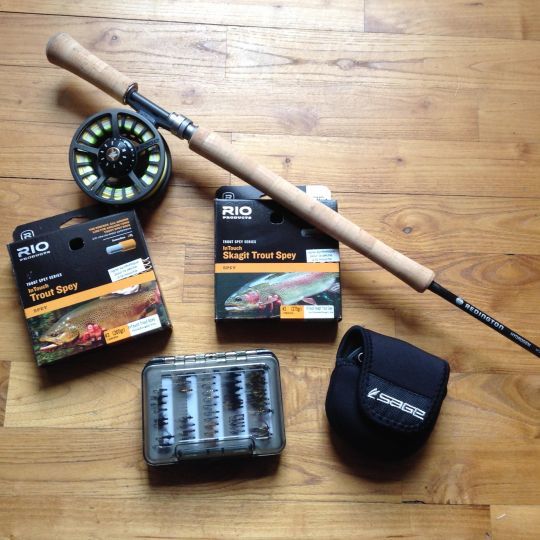
Adapting your equipment to your needs
Nowadays, with new technologies, rod manufacturers have considerably lightened the weight of materials and the quality of blanks, making it possible to cast further with shorter and shorter rods. Rods have gone from 16 feet and over to under 15 feet, with anglers regularly using 13 to 14-foot rods for big river fishing. New ranges of lines have also been developed for two-handed or Spey rods, switch rods and one-handed rods, opening up new horizons.
It is therefore possible to adapt your equipment to each condition, season, target species, fish size, fly size/weight, line density and length... and still be effective and have fun.
Nevertheless, finding the right rod/silk combination is the key to effective, fatigue-free casting.
All too often, I meet anglers who don't have the right equipment, and it's a good idea to find out what you need to get the right combo for the job.
The market has recently begun to offer equipment specially designed to fish for trout, grayling and other whitefish with short, lightweight, high-performance Spey rods that are ideal for both streamer and drowned-water fishing, especially with the Trout Spey rods and lines that some brands have recently developed.
But can't the Spey Cast be used to search for other species? Of course! Some anglers don't hesitate to make use of the many advantages of this technique, which allows them to quickly and efficiently prospect our playgrounds.

 /
/ 